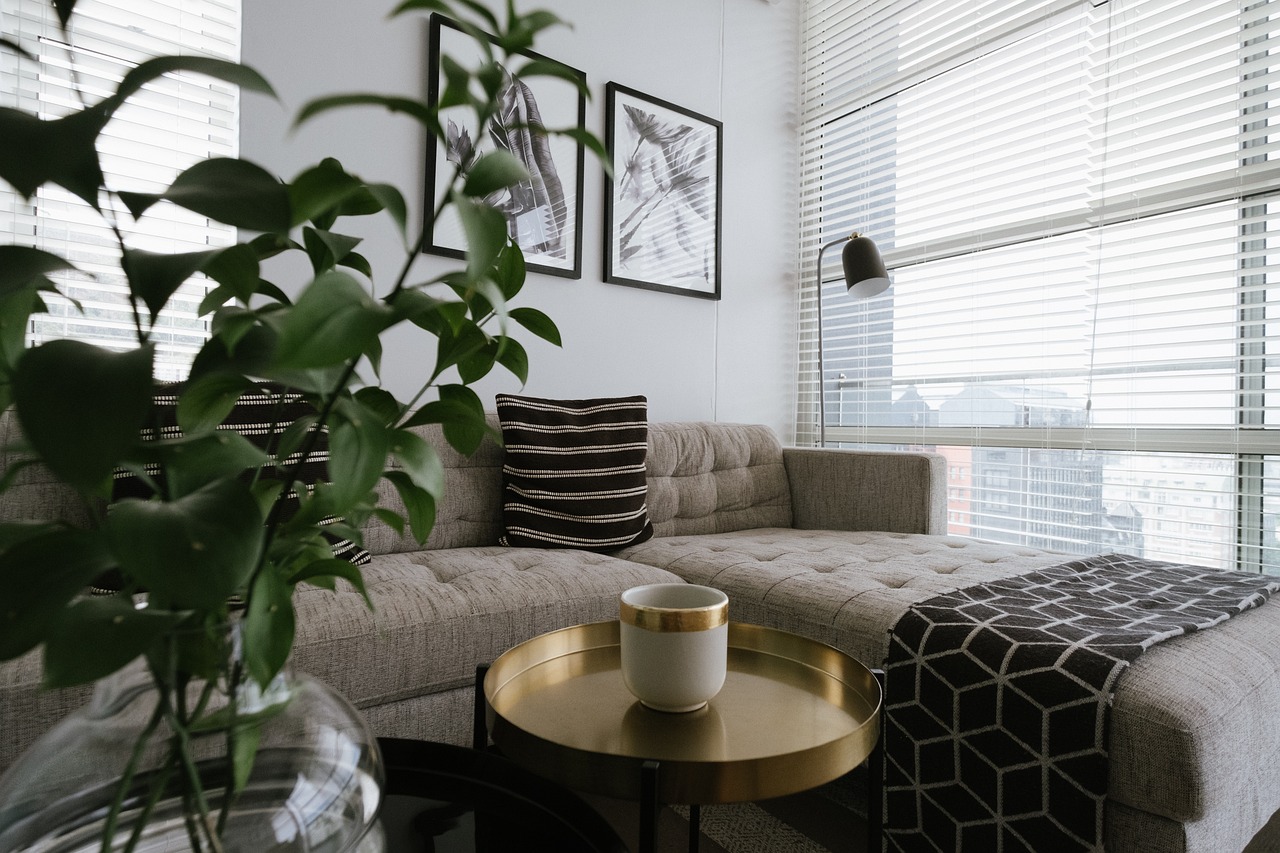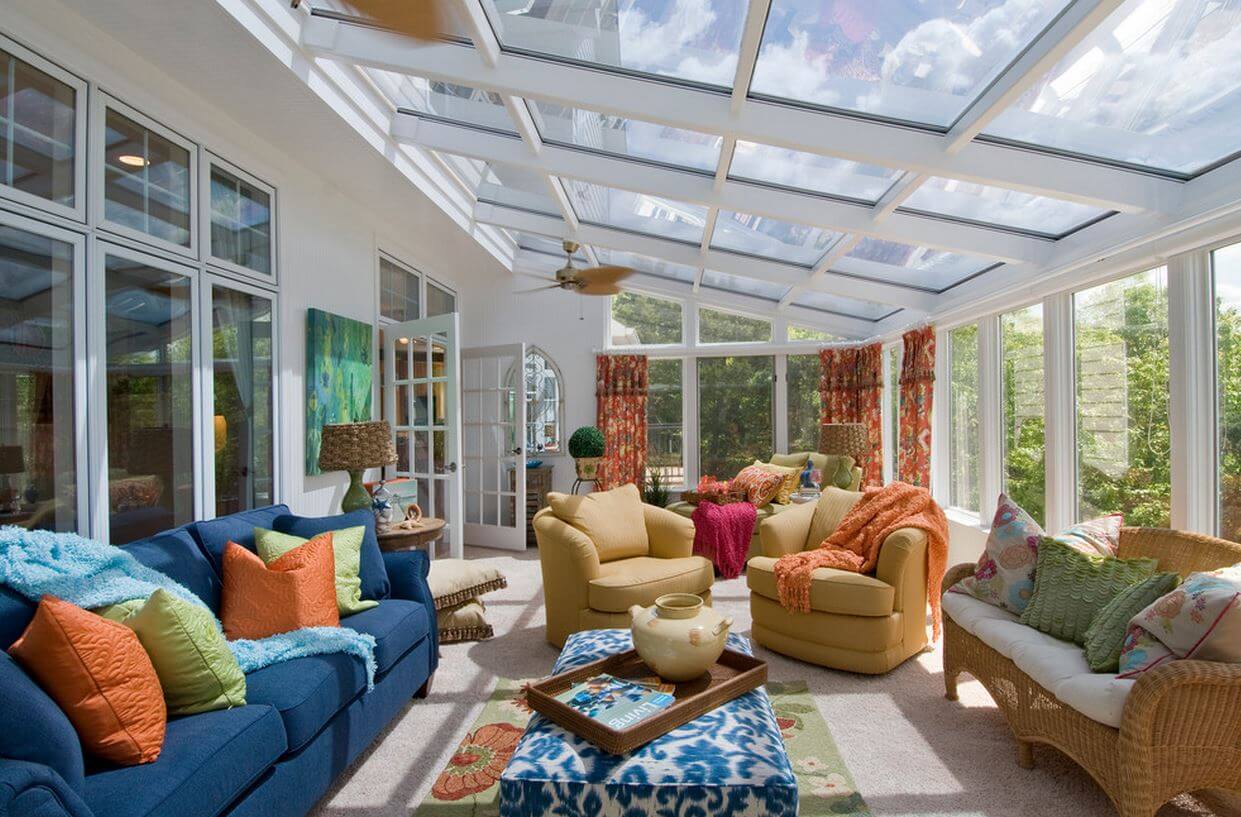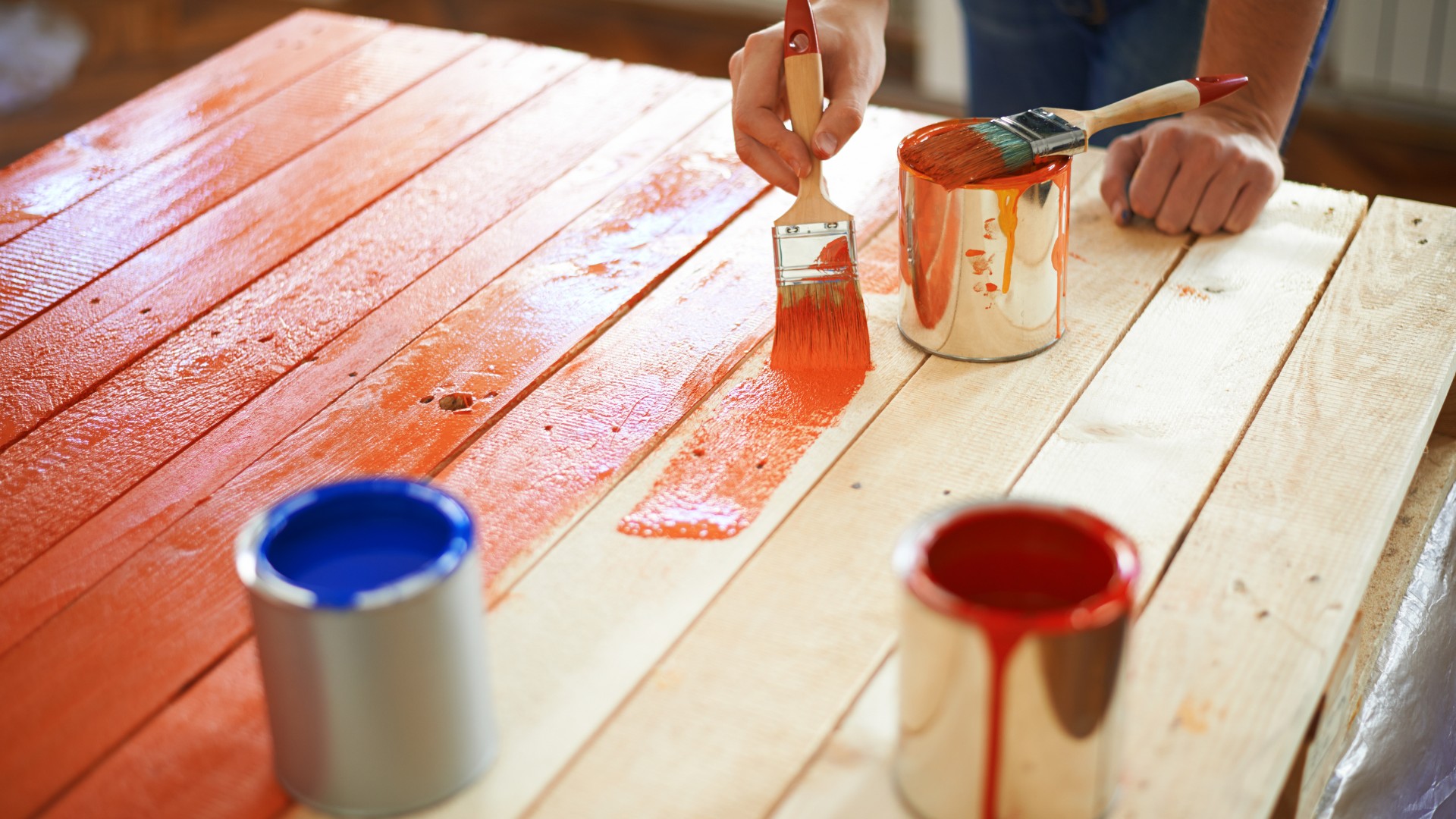

Articles
What Is Upholstery Furniture
Modified: October 20, 2024
Discover the beauty and versatility of upholstery furniture. From sofas to chairs, explore our wide selection of comfortable and stylish pieces. Upgrade your home decor with quality furniture today!
(Many of the links in this article redirect to a specific reviewed product. Your purchase of these products through affiliate links helps to generate commission for Storables.com, at no extra cost. Learn more)
What Is Upholstery Furniture
Upholstery furniture is a type of furniture that is designed and manufactured with padded materials to provide comfort and aesthetics. It involves the process of adding layers of padding, fabric, and sometimes additional decorative elements to furniture pieces such as sofas, chairs, ottomans, and headboards. The upholstery process transforms plain furniture frames into stylish and inviting pieces that enhance the overall décor of a space.
The main purpose of upholstery furniture is to provide comfort, support, and a soft surface for seating or lounging. It adds a layer of cushioning to the furniture, making it more comfortable to sit on for extended periods. Upholstered furniture also serves as a decorative element, allowing individuals to personalize their living spaces and express their style.
The process of upholstery involves several steps, including choosing the appropriate frame, selecting the desired fabric, adding padding and support materials, and attaching the fabric to the frame. Skilled craftsmen use various techniques to create beautiful and durable pieces of furniture that are functional and visually appealing.
Upholstery furniture can be customized to suit individual preferences, with choices available in terms of fabric types, colors, patterns, and textures. This allows individuals to create a cohesive and personalized space that reflects their style and taste. Whether it is a modern, minimalist design or a more traditional and ornate look, upholstery furniture can be tailored to fit any interior design theme.
Moreover, upholstery furniture is not limited to just residential settings. It is widely used in commercial spaces such as offices, hotels, restaurants, and waiting areas. Upholstered furniture not only adds to the aesthetic appeal of these spaces but also provides a comfortable seating option for visitors and customers.
Ultimately, upholstery furniture is a versatile and essential part of interior design. It brings comfort, style, and functionality to living spaces and commercial environments. With its ability to be customized and its wide range of fabric choices, upholstery furniture remains a popular choice for those seeking to create a comfortable and visually appealing space.
Key Takeaways:
- Upholstery furniture combines comfort, style, and customization, allowing individuals to create personalized and inviting spaces that reflect their taste and lifestyle. It is a versatile and essential part of interior design, providing endless possibilities for creating a comfortable and visually appealing space.
- Upholstery furniture trends, such as sustainable materials, bold colors and patterns, mixed materials, retro styles, modular designs, and texture embellishments, offer inspiration for creating a personalized and inviting space. It’s crucial to choose pieces that reflect personal style, lifestyle, and functional needs.
Introduction
Upholstery furniture has been a staple in homes and commercial spaces for centuries. It not only provides comfort and functionality but also adds a touch of elegance and sophistication to any space. Whether you’re looking to furnish a cozy living room or a luxurious office, upholstery furniture offers a wide range of options to suit every style and preference.
In this article, we will explore the world of upholstery furniture, from its definition and history to the different types and benefits it offers. We will also delve into popular upholstery fabric choices, factors to consider when choosing upholstery furniture, and tips for maintaining and cleaning these pieces to ensure their longevity. Additionally, we will discuss the latest trends in upholstery furniture to give you inspiration for your next interior design project.
Upholstery furniture plays a crucial role in enhancing the overall look and feel of a space. It not only serves as functional seating but also acts as a focal point, drawing attention and creating a cozy atmosphere. By understanding the basics of upholstery furniture and its various aspects, you can make informed decisions when selecting and caring for these pieces.
Whether you’re a homeowner, interior designer, or furniture enthusiast, this article will provide you with valuable insights into the world of upholstery furniture. So, let’s dive in and discover the beauty and versatility of this timeless furniture style.
Definition of Upholstery Furniture
Upholstery furniture refers to furniture pieces that are designed and constructed with padded materials to provide comfort and style. It involves the process of adding layers of padding, fabric, and sometimes additional decorative elements to furniture frames, transforming them into luxurious and visually appealing pieces.
The term “upholstery” itself stems from the Middle English word “upholde,” meaning to hold up or support. Upholstery furniture serves this purpose by adding cushioning and support to the furniture structure, making it more comfortable for sitting, lounging, or reclining.
The process of upholstering furniture begins with selecting a sturdy frame made of wood, metal, or a combination of materials. The frame serves as the foundation for the piece, providing the structure and support necessary for the upholstery process. The upholstery process involves attaching various layers of padding, such as foam or batting, onto the frame to create the desired level of comfort.
After the padding is in place, the next step is to choose the appropriate fabric for the upholstery. There is a wide range of fabrics available, including natural fibers such as cotton, linen, and wool, as well as synthetic materials like polyester and microfiber. The fabric is carefully cut and tailored to fit the furniture frame, ensuring a smooth and seamless appearance.
In addition to the padding and fabric, upholstery furniture may feature decorative elements such as nailhead trims, tufting, or intricate stitching patterns. These details add visual interest and further enhance the overall aesthetic appeal of the piece.
Upholstery furniture is versatile and can be found in various styles, from traditional and classic designs to modern and contemporary ones. It can range from large pieces like sofas and armchairs to smaller items such as ottomans and dining chairs. The wide range of options allows individuals to find upholstery furniture that suits their personal style and complements their existing decor.
Overall, upholstery furniture combines comfort, style, and craftsmanship. It is a labor-intensive process that requires skill and attention to detail. The end result is furniture that not only provides a comfortable place to sit but also adds a touch of elegance and sophistication to any living space or commercial setting.
History of Upholstery Furniture
The history of upholstery furniture dates back centuries, with evidence of upholstered pieces found in ancient Egypt and Greece. However, it was during the Renaissance period in Europe that upholstery truly began to flourish, with advancements in furniture design and upholstery techniques.
In the 16th and 17th centuries, upholstery furniture was primarily a symbol of wealth and status among the nobility and aristocracy. Ornately carved wooden frames were padded and covered with luxurious fabrics, often showcasing intricate embroidery and decorative details. These pieces were often commissioned for palaces, mansions, and grand estates.
During the 18th century, the upholstery industry experienced significant growth and innovation. This era saw the rise of upholstered seating furniture, such as sofas and armchairs, becoming more common in middle-class households. Skilled craftsmen developed new techniques, including coil spring construction and the use of horsehair for padding, to create more comfortable and durable upholstery furniture.
With the Industrial Revolution in the 19th century, upholstery furniture became more accessible to the general population. Mass production techniques allowed for greater affordability and a wider range of styles. The use of steam-powered machinery streamlined the upholstery process, making it more efficient and reducing the labor required.
The 20th century brought further advancements in upholstery furniture manufacturing. New materials such as foam padding and synthetic fabrics were introduced, offering increased comfort and durability. Modern designs emerged, reflecting the changing aesthetic preferences of the time, with sleek lines and minimalist forms gaining popularity.
Today, upholstery furniture continues to evolve and adapt to contemporary design trends. Traditional styles are still highly sought after, with classic upholstery techniques and elegant fabrics remaining popular. However, there is also a growing demand for more modern and eclectic designs, incorporating bold colors, unique textures, and innovative materials.
The history of upholstery furniture is a testament to its enduring appeal and timeless charm. From its origins as a symbol of wealth and luxury to its widespread availability and versatility in the modern era, upholstery furniture has remained a staple in homes and commercial spaces around the world. It not only provides comfort but also adds beauty and character to any interior design scheme.
Types of Upholstery Furniture
Upholstery furniture comes in a variety of types, each designed to serve different purposes and fit various spaces. From sofas and armchairs to ottomans and dining chairs, there is a wide range of options to choose from. Let’s explore some of the most common types of upholstery furniture:
Read more: What-Not Furniture
Sofas and Sectionals:
Sofas and sectionals are the centerpiece of a living room or lounge area. These large seating pieces often accommodate multiple people and provide a comfortable space for relaxation and socializing. Sofas come in different sizes, styles, and configurations, while sectionals typically consist of multiple modules that can be arranged to fit different room layouts.
Armchairs and Recliners:
Armchairs and recliners offer a cozy and individual seating option. These chairs are typically designed with armrests, a backrest, and a comfortable seat. Armchairs can vary in style, from sleek and modern designs to more traditional and ornate ones. Recliners, on the other hand, have an adjustable backrest that can be reclined for added comfort.
Ottomans and Footstools:
Ottomans and footstools serve as versatile pieces of upholstery furniture. They can be used as a footrest for added comfort when sitting on a sofa or armchair, or as extra seating when needed. Ottomans come in various shapes and sizes, from rectangular to round, and can also double as storage units with a hinged top.
Dining Chairs:
Dining chairs are a crucial component of any dining room or kitchen area. These chairs provide comfortable seating for meals and gatherings around a dining table. Dining chairs can be upholstered with fabric or leather and offer a wide range of styles, including traditional, modern, and transitional designs.
Headboards:
While not strictly seating furniture, upholstered headboards play a significant role in bedroom decor. These padded boards are attached to the bed frame and provide a comfortable support for resting against while sitting up in bed. Headboards come in various shapes, sizes, and fabric choices, allowing for customization to match the overall bedroom aesthetic.
These are just a few examples of the many types of upholstery furniture available. Each type offers a unique combination of style, comfort, and functionality, allowing individuals to create personalized and inviting spaces that reflect their taste and lifestyle.
Benefits of Upholstery Furniture
Upholstery furniture offers a multitude of benefits that make it a popular choice for homeowners and businesses alike. Whether you’re looking for comfort, style, or functionality, upholstery furniture has got you covered. Let’s explore some of the key benefits of incorporating upholstery furniture into your space:
Comfort:
One of the primary benefits of upholstery furniture is the comfort it provides. The layers of padding and cushioning make sitting or lounging on these pieces a cozy and enjoyable experience. Whether you’re sinking into a plush sofa or resting on a well-padded armchair, upholstery furniture offers a level of comfort that can’t be matched by other types of furniture.
Style and Versatility:
Upholstery furniture comes in a wide range of styles, fabrics, colors, and patterns, allowing you to personalize your space and create a unique look. From timeless and elegant designs to bold and contemporary ones, there’s something to suit every taste and interior design theme. It’s easy to find upholstery furniture that complements your existing decor or becomes a statement piece in its own right.
Read more: How To Redo The Upholstery On Dining Chairs
Durability:
When properly constructed, upholstered furniture can be incredibly durable and long-lasting. High-quality materials, such as sturdy hardwood frames and durable fabrics, ensure that these pieces can withstand regular use and maintain their appearance over time. With proper care and maintenance, upholstery furniture can continue to look and feel great for many years.
Customization:
Upholstery furniture offers a high degree of customization. You have the flexibility to choose the fabric, color, and pattern that best suits your style and preferences. Whether you prefer a classic neutral tone or a bold and vibrant print, upholstery furniture can be tailored to reflect your individuality and enhance your decor.
Sound Dampening:
The soft and padded nature of upholstery furniture helps to absorb sound, making it ideal for creating a quieter and more peaceful environment. This can be particularly beneficial in spaces with hard flooring or high ceilings, where sound can easily echo and reverberate.
Aesthetics and Visual Appeal:
Upholstered furniture adds a level of elegance and sophistication to any space. The variety of fabrics and textures available can elevate the aesthetic appeal of your room, creating a stylish and inviting atmosphere. Additionally, upholstery furniture can be a focal point in your space, making a statement and creating a memorable impression on guests.
These are just a few of the many benefits that upholstery furniture offers. From comfort and customization to durability and style, investing in quality upholstery furniture can transform your space and enhance your overall living experience.
Read also: 15 Best Upholstery Steam Cleaner For 2025
Popular Upholstery Fabrics
The choice of upholstery fabric plays a significant role in the overall look, feel, and durability of upholstered furniture. There is a wide variety of fabrics available, each with its own unique characteristics and benefits. Let’s explore some of the most popular upholstery fabrics:
1. Leather:
Leather is a timeless and luxurious upholstery fabric choice. It offers durability, a soft and supple texture, and a classic look that can easily complement both traditional and contemporary interiors. Leather upholstery is known for its durability and ability to age beautifully, developing a unique patina over time.
2. Linen:
Linen is a natural fabric made from flax fibers and is highly regarded for its crisp and breathable qualities. It has a relaxed and casual appearance that adds a touch of sophistication to any space. Linen upholstery is known for its durability, resistance to pilling, and ability to keep cool in warm weather.
3. Velvet:
Velvet is a luxurious and plush fabric that adds depth and texture to upholstered furniture. It is known for its softness, rich colors, and elegant sheen. Velvet upholstery creates a sense of opulence and can enhance the overall aesthetic of a room, whether in bold and vibrant tones or neutral hues.
Read more: What Is A Sideboard Furniture
4. Cotton:
Cotton is a popular upholstery fabric choice due to its versatility, softness, and natural feel. It is highly breathable and suitable for both warm and cool climates. Cotton upholstery is available in a wide range of patterns, colors, and textures, making it easy to find a style that suits your aesthetic preferences.
5. Microfiber:
Microfiber is a synthetic fabric that has gained popularity in recent years due to its durability and ease of maintenance. It is made from ultra-fine polyester or nylon fibers, resulting in a soft and comfortable texture. Microfiber upholstery is known for its resistance to stains, fading, and wrinkling, making it an excellent choice for high-traffic areas or households with children and pets.
6. Chenille:
Chenille is a plush fabric that is known for its softness and textured appearance. It is made from cotton, silk, or synthetic fibers, and its unique construction creates a fuzzy and velvety surface. Chenille upholstery adds a cozy and inviting feel to furniture pieces, making it perfect for creating a warm and comfortable living space.
While these are some of the popular upholstery fabric options, there are many other choices available, including polyester, silk, wool, and blends of different materials. When selecting an upholstery fabric, consider factors such as durability, maintenance requirements, comfort, and how well it complements your overall design vision.
Ultimately, choosing the right upholstery fabric is crucial in creating a stunning and long-lasting piece of furniture that reflects your style and withstands the test of time.
Factors to Consider when Choosing Upholstery Furniture
Choosing the right upholstery furniture is essential to create a comfortable, stylish, and functional space. To make an informed decision, consider the following factors:
Read more: What Is Buffet Furniture
1. Style and Aesthetic:
Determine the overall style and aesthetic you want to achieve in your space. Whether it’s modern, traditional, minimalist, or eclectic, selecting upholstery furniture that aligns with your design vision is crucial for creating a cohesive and visually appealing look.
2. Comfort:
Consider how you intend to use the furniture and prioritize comfort. Look for furniture with ample cushioning, proper back support, and a seat depth that suits your preferences. Test the furniture in person if possible to ensure it meets your comfort requirements.
3. Durability:
Invest in upholstery furniture that is built to last. Look for sturdy construction, such as hardwood frames and reinforced corners, that can withstand regular use. Consider the durability of the fabric as well, especially in high-traffic areas or households with children or pets.
4. Maintenance:
Consider the maintenance requirements of the upholstery fabric. Some fabrics may require regular cleaning or professional maintenance, while others are more stain-resistant and easy to care for. Choose a fabric that aligns with your lifestyle and willingness to maintain it properly.
Read more: What Is Rubberwood Furniture
5. Size and Proportions:
Ensure the dimensions of the upholstery furniture fit well within your space. Consider the size of the room, the layout, and the other furniture pieces in the area to ensure proper proportions. Oversized furniture can make a space feel cramped, while furniture that is too small might look out of place.
6. Fabric Choice:
Consider the fabric choice based on factors such as durability, aesthetic, and lifestyle. Consider the type of fabric that suits your needs best, whether it is leather for a timeless and luxurious look, linen for breathability, or microfiber for ease of maintenance. Also, consider the color and pattern of the fabric to ensure it complements your existing decor.
7. Budget:
Set a realistic budget for your upholstery furniture purchase. Determine the quality level and features that are important to you and allocate your budget accordingly. Keep in mind that investing in higher-quality furniture may result in furniture that lasts longer and maintains its appearance over time.
By considering these factors, you can make an informed decision when choosing upholstery furniture that not only enhances the aesthetics of your space but also provides comfort, durability, and functionality for years to come.
Maintaining and Cleaning Upholstery Furniture
Proper maintenance and cleaning of upholstery furniture can help preserve its appearance and extend its lifespan. Here are some essential guidelines to follow:
Read more: What Is Vanity Furniture
Regular Maintenance:
Perform regular maintenance tasks to keep your upholstery furniture in good condition. This includes vacuuming the furniture regularly to remove dust, dirt, and debris. Use a soft brush attachment to avoid scratching the fabric. Flip cushions regularly to ensure even wear and prevent sagging.
Protect from Sunlight:
Direct sunlight can cause upholstery fabric to fade and deteriorate over time. Place your furniture away from direct sunlight, or use curtains, blinds, or window films to protect it from harmful UV rays. Consider rotating the position of your furniture periodically to minimize sun exposure.
Address Stains Immediately:
Accidents happen, and when a spill occurs, it’s crucial to address it promptly. Blot the area gently with a clean cloth or paper towel to absorb as much liquid as possible. Avoid rubbing the stain, as it can push the spill deeper into the fabric. Treat stains with appropriate cleaners recommended for your specific fabric type.
Follow Manufacturer’s Instructions:
Each upholstery fabric may have specific cleaning instructions provided by the manufacturer. It is essential to follow these instructions for the best cleaning practices to avoid damaging the fabric. Check the care labels or consult the manufacturer’s website for detailed guidance on how to clean and care for your specific upholstery fabric.
Read more: What Is A Furniture Pad
Professional Cleaning:
Consider professional cleaning for your upholstery furniture every 1-2 years, depending on usage and the manufacturer’s recommendations. Professional cleaners have the knowledge and specialized equipment to deep clean and remove stubborn stains without causing damage to the fabric. They can also apply protective treatments to help repel future stains.
Avoid Harsh Chemicals:
When cleaning upholstery furniture, avoid using harsh chemicals or bleach, as they can damage the fabric and cause discoloration. Opt for mild, fabric-safe cleaners or consider using homemade solutions, such as a mixture of mild dish soap and water, or a vinegar and water solution for gentle yet effective cleaning.
Test in a Small Area:
Before using any cleaning solution or product on your upholstery furniture, it’s always advisable to test it in a small, inconspicuous area first. This will ensure that the cleaner doesn’t cause any adverse reactions or discoloration on the fabric. Wait for the tested area to dry before proceeding with full cleaning.
By following these maintenance and cleaning practices, you can keep your upholstery furniture looking its best for years to come. Regular upkeep and proper care will not only maintain the appearance but also contribute to a healthy and hygienic living environment.
Upholstery Furniture Trends
Upholstery furniture trends evolve over time, reflecting changing design preferences and innovations in materials and techniques. Here are some of the latest trends in upholstery furniture:
Read more: What Is In Pledge Furniture Polish
1. Sustainable Materials:
As sustainability becomes increasingly important, there is a growing trend towards using eco-friendly materials in upholstery furniture. Natural fibers like organic cotton, hemp, and linen are gaining popularity, as well as recycled materials such as reclaimed wood for frames and padding made from recycled foam.
2. Bold Colors and Patterns:
While neutral tones still have their place, bold and vibrant colors are making a comeback in upholstery furniture. Jewel tones like emerald, sapphire, and ruby are particularly popular, adding a touch of drama and personality to furniture pieces. Additionally, eye-catching patterns such as geometric prints, abstract designs, and floral motifs are being embraced for a more eclectic and artistic look.
3. Mixed Materials:
Combining different materials in upholstery furniture is a rising trend. Pairing fabric upholstery with leather or metal accents creates a dynamic and visually appealing contrast. This mixing of materials adds depth and texture to furniture pieces, making them stand out in a space.
4. Retro and Mid-Century Modern Styles:
The retro and mid-century modern design aesthetic continues to influence furniture trends, including upholstery. Furniture with sleek lines, tapered legs, and organic shapes reminiscent of the 1950s and 1960s is making a strong comeback. These designs offer a timeless appeal and blend well with both contemporary and traditional interiors.
Read more: What Color Is Espresso Furniture
5. Modular and Versatile Designs:
Modularity is a key trend in upholstery furniture. Modular pieces, such as sectionals and modular sofas, allow for flexibility in arranging and reconfiguring furniture to suit different spaces and needs. Additionally, multifunctional designs, such as sleeper sofas or storage ottomans, are gaining popularity as they maximize space and provide versatility.
6. Texture and Embellishments:
Texture is playing a vital role in upholstery furniture trends, adding depth and visual interest. Fabrics with unique textures like bouclé, velvet, and faux fur are in high demand, creating a tactile experience. Furthermore, decorative elements like tufting, embroidery, and contrasting piping are being embraced to add a touch of luxury and sophistication.
It’s important to note that trends are constantly evolving, and personal preference should always be the primary consideration when selecting upholstery furniture. While trends can provide inspiration, it’s crucial to choose pieces that reflect your style, lifestyle, and functional needs.
Whether you prefer a timeless and classic look or want to experiment with the latest design trends, upholstery furniture offers endless possibilities to create a personalized and inviting space.
Conclusion
Upholstery furniture is more than just functional seating; it is a reflection of your style and a key element in creating a comfortable and visually appealing space. Throughout this article, we have explored the world of upholstery furniture, from its definition and history to the various types, benefits, and trends.
Upholstery furniture offers numerous advantages. It provides comfort, style, and customization options, allowing you to create a space that truly reflects your personality. With a wide range of fabrics to choose from, such as leather, linen, and velvet, you have the freedom to select the material that suits your taste and lifestyle.
When choosing upholstery furniture, there are several factors to consider, including style, comfort, durability, and maintenance. By taking these factors into account, you can make an informed decision and select furniture that fits seamlessly into your space and meets your specific needs.
Maintaining and cleaning your upholstery furniture is essential to keeping it in optimal condition. Regular maintenance tasks, such as vacuuming and addressing stains promptly, will help extend the life of your furniture and preserve its appearance. Following manufacturer’s instructions and seeking professional cleaning when necessary will ensure thorough and proper care.
Finally, staying updated with upholstery furniture trends allows you to incorporate fresh ideas and styles into your space. While trends come and go, it’s important to choose furniture that resonates with your personal taste and complements your overall design vision.
In conclusion, upholstery furniture is a versatile and essential part of interior design. It brings comfort, style, and functionality to living spaces and commercial environments. By understanding the different aspects of upholstery furniture and considering factors like style, comfort, durability, and maintenance, you can make informed choices and create a space that reflects your unique style and personality.
Frequently Asked Questions about What Is Upholstery Furniture
Was this page helpful?
At Storables.com, we guarantee accurate and reliable information. Our content, validated by Expert Board Contributors, is crafted following stringent Editorial Policies. We're committed to providing you with well-researched, expert-backed insights for all your informational needs.





0 thoughts on “What Is Upholstery Furniture”